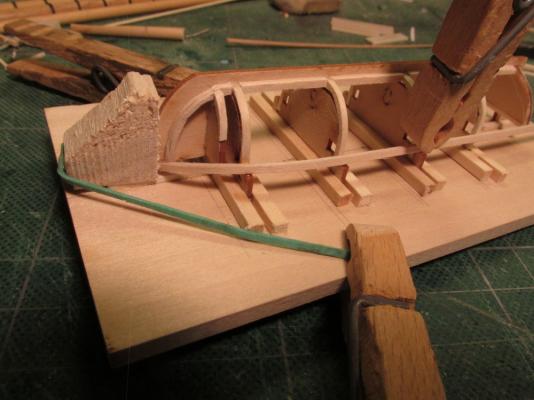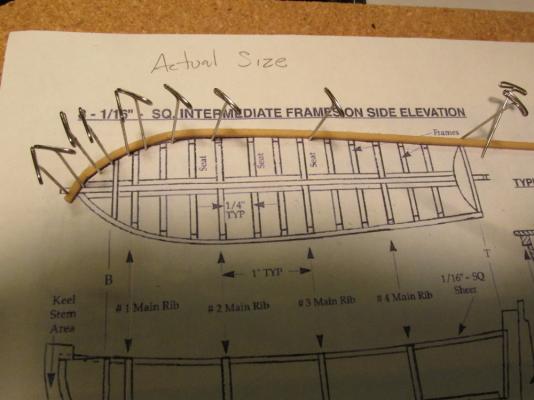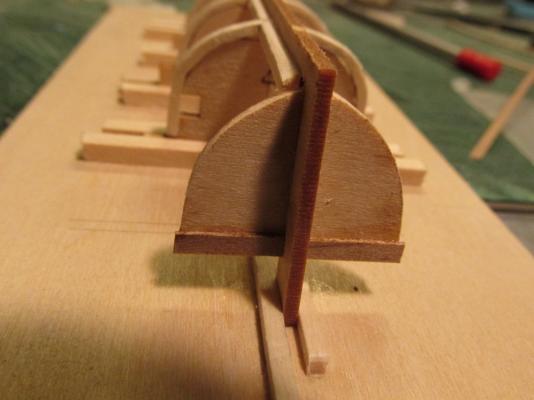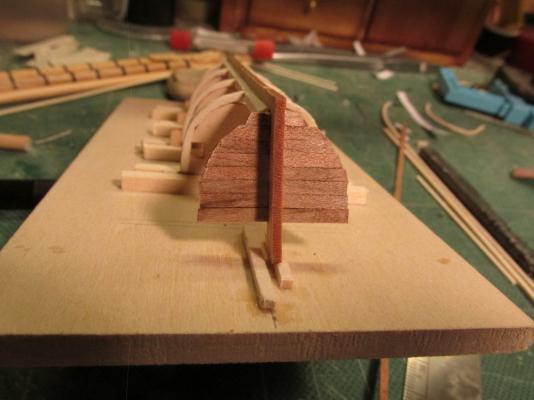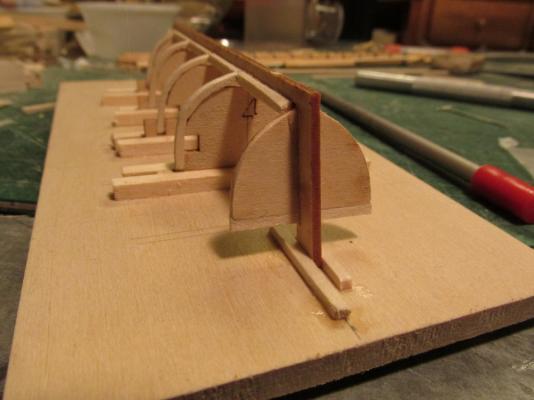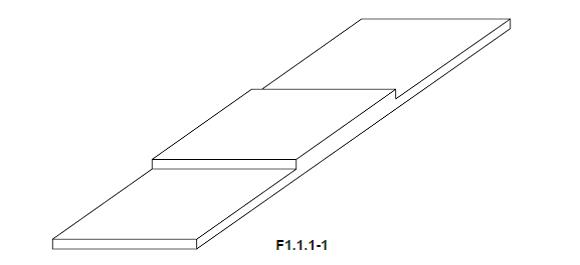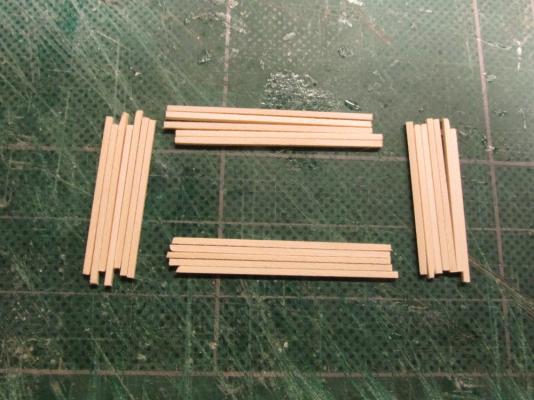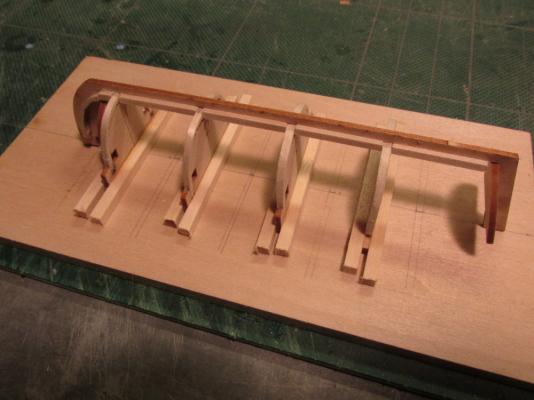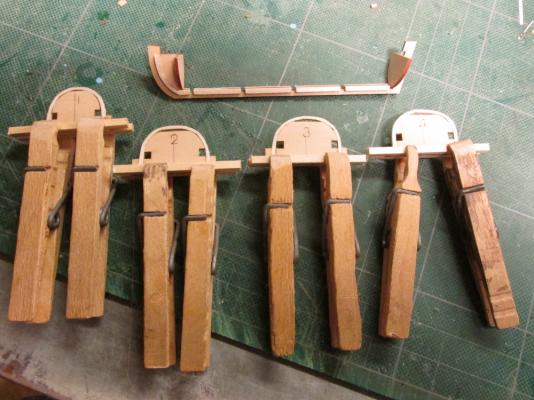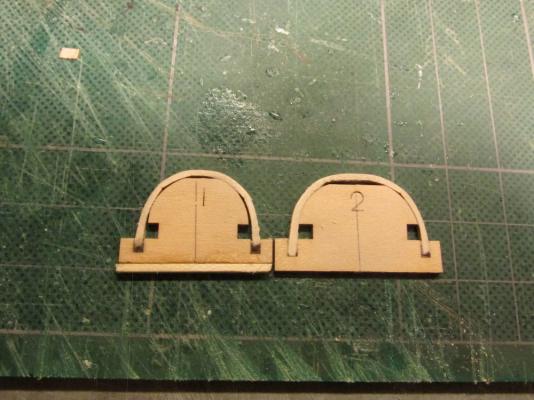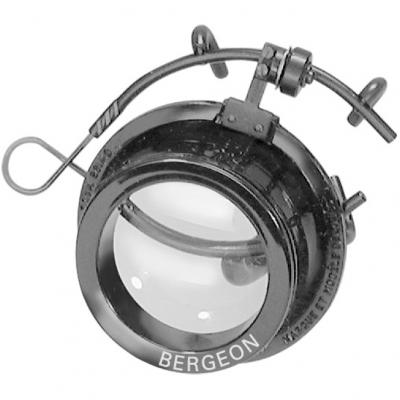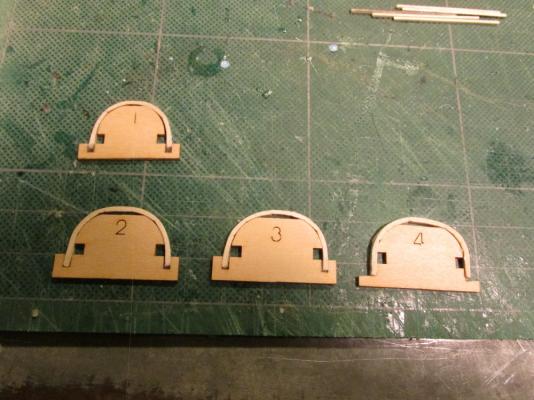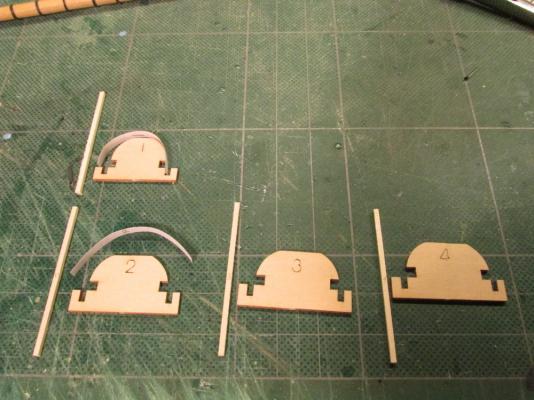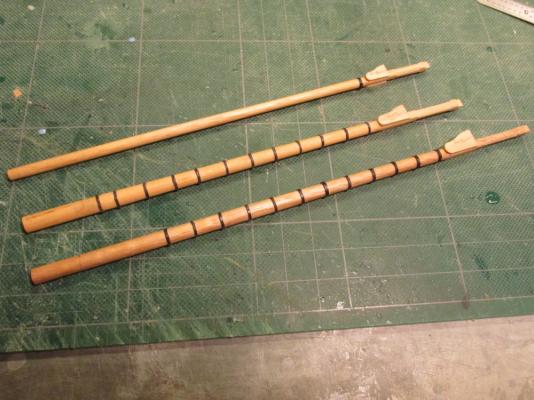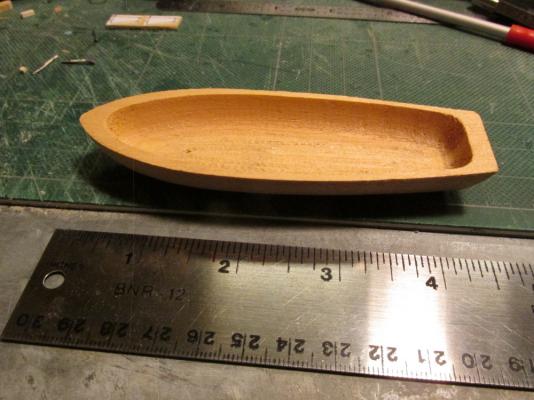-
Posts
2,480 -
Joined
-
Last visited
Content Type
Profiles
Forums
Gallery
Events
Everything posted by JSGerson
-
Once the wood was bent and dry, it was dry fitted. Here it was discovered that again, either the instructions were not clear or the parts did not match the plans. All of the ribs had notches in the keel, the stem bulkhead did not. This created a disconnect as to how the planking would flow over it. The bulkhead also seemed too narrow so I tried to beef it up by adding more basswood. Even then it appears that I will have to use some wood filler to fill in some of the open gaps. The first sheer line was glued in place with WeldBond at the bow. It will be completed when it is glued to all the remaining ribs and the transom. Of course this will be repeated for the other side.
- 93 replies
-
- ships boat
- model shipways
-
(and 1 more)
Tagged with:
-
The Sheer Line The sheer line is made of 1/16” x 1/16” basswood. I debated whether to substitute teak for that or not and decided it would be easier to bend the basswood. I could always stain it to add an accent to the look of the boat if I didn’t like the way it looked against the teak. Because the plans are the same of all sizes of the kit, the plans were reduced to match the size of my kit. The basswood was soaked for a day and pre-bent using a copy of the reduced plans to pin and bend the wood.
- 93 replies
-
- ships boat
- model shipways
-
(and 1 more)
Tagged with:
-
Because the planking will cover the edges of the transom, the transom had to be planked first. I chose to do this prior to installing the sheer line rail which the instruction would have me make next. The wood provided in the kit is basswood, a soft light colored material. I had a piece of teakwood at my disposal which I had obtained and described earlier in my Rattlesnake build log and decided to use it for the planking. The basswood planks were 1/32” x 3/32”. If the Rattlesnake is 1:64 scale then so must be the boat. A plank 1/32” thick would translate to 2” on the real boat, a bit excessive I thought. I first cut a teak plank to 1/64” x 3/32” which by the way is a piece of cake with the Byrnes saw but found that although the wood held up fine, it was a been too flexible. The resulting model would have felt like it was made out of paper. The next piece I made a tad thicker and that seemed to work. I planked the transom. The second photo is before any trimming.
- 93 replies
-
- ships boat
- model shipways
-
(and 1 more)
Tagged with:
-
Transom Following the instruction I had glued the laser cut transom into place and noticed it left a 1/16” gap where it met to top of the notch in the stern post. Assuming there was a reason for this that would make it presence know, I left it. It didn’t Looking at the plans, no gap is shown. Using a piece of 1/16” x 1/16” basswood, I filled it in
- 93 replies
-
- ships boat
- model shipways
-
(and 1 more)
Tagged with:
-
When done each platform will consist of four components, front, back and 2 sides that are in effect, lap joined together. To make the lap joint, the thickness on the outer third (approx.) of each end of the component has to be reduced by half to 1/64”. This is what has been so frustrating. Just sanding the edge joined components cause the pieces to break apart which required regluing. Reducing the thickness also causes the components to fall apart. After all, the glued surface is only 1/32” to begin with. The Practicum claims that the reduction can be performed with an Exacto knife. How one can maintain that tolerance using a hand tool is not explained. My plan of attack was to use the Byrnes saw. I set the blade to a height of 1/64” and by cutting a groove one blade width at a time, I can create the required rabbet assuming the piece don’t fall apart again, which unfortunately they have. The diagram and photograph are from the Practicum.
- 974 replies
-
- rattlesnake
- mamoli
-
(and 1 more)
Tagged with:
-
Mast Tops The mast tops is a study of taking long sticks of wood, chopping them up into smaller sticks of wood and reassembling them into something that resembles a platform. If you have noticed I have sloooowwwed way down in my postings, not so much as from inactivity, but frustration and lots of do overs. The tops are made from 1/32” square boxwood which was cut to size anywhere from 15/16” to 1 ½” in length depending on the mast and whether it’s the front/back or side portion of the platform. The 4 to 7 pieces boxwood are then edged CA glued together again depending on the part.
- 974 replies
-
- rattlesnake
- mamoli
-
(and 1 more)
Tagged with:
-
Because I chose the 4 3/4" sized boat to fit the Rattlesnake, I'm treating my model boat as 1:64 scale, the same as the Mamoli kit. I thought about a bow locker, but not sure what it would look like for this boat. Take a look at the boats Captain Steve made for his 1:76 scale USS Constitution. He did a fabulous job on four different boats. There should be plenty of ideas to choose from for lockers, seats, oars, etc. Jon Edit: changed "six" to "four: I stand corrected
- 55 replies
-
- ships boat
- model shipways
-
(and 1 more)
Tagged with:
-
It's coming along very nicely. You're making a lot more progress than I am as I plod along. I did notice that you ended up with the result that I have been trying to avoid so it will be interesting to see how you handle it. There is a gap between the bow bulkhead and the planking which I believe is a model design flaw. As I figured it, there should have been a notch in the keel for the bulkhead and handled just like the ribs. It would have made the bulkhead wider so all the planking would have fitted flush. Hopefully, when all the other stuff is put it their place, this minor flaw will be hidden. Jon
- 55 replies
-
- ships boat
- model shipways
-
(and 1 more)
Tagged with:
-
If you don't mind, I've got a few more question for you: Did you notice that the transom seemed to be short in height? On my model there was a 1/16" of an inch gap inside the the keel transom notch. At first I thought the gap must have a purpose that would reveal itself as the build progressed, but now I don't think so. I added a filler strip across the transom. Since you are ahead of me, did you run into the same thing? Did you have trouble determining where the sheer strip actual met the stem? It appears to be above where the curved 1/16" strip ends on the stem. I guessing the point of contact to the stem is forward of the curved stem strip because the planking would be against the strip. The plan is not very detailed there. What did you do? Thanks, Jon
- 55 replies
-
- ships boat
- model shipways
-
(and 1 more)
Tagged with:
-
Painting is not an option I'm considering at this point as the boat will be on board my unpainted Rattlesnake. The only deviation from the natural wood color on the ship is the black trim. I didn't have ebony wood so the black is painted. I'm like you, I'll see how the basswood looks and if I have to, I'll stain the wood. I'm looking forward to your next progress report. Jon
- 55 replies
-
- ships boat
- model shipways
-
(and 1 more)
Tagged with:
-
Cute! Since you started over and had to make a new keel and jig, are you using the original kit basswood for the planking? Are you planning on paint or stain the wood?
- 55 replies
-
- ships boat
- model shipways
-
(and 1 more)
Tagged with:
-
It looks like your patience is paying off. She's really starting to take shape. I just hope I do as well as you. I just have to ask, what is with the coins? Are they there to indicate scale or port from starboard or both?
- 55 replies
-
- ships boat
- model shipways
-
(and 1 more)
Tagged with:
-
Alright, another ship's boat builder! I took a look at your log and your are doing great especially for a "first timer." So far it seems that you and I have had our problems with bending the ribs. Since you are ahead of me, Keven, I now have someone to follow. Out of curiosity, what size kit are you building?
- 93 replies
-
- ships boat
- model shipways
-
(and 1 more)
Tagged with:
-
There seems to be a lot of anticipation as to how this build will turn out. I hope I don't disappoint.
- 93 replies
-
- ships boat
- model shipways
-
(and 1 more)
Tagged with:
-
The image below shows the dry fit of the assembled jig. Once it’s glued into place, the real building of the ship’s boat will begin.
- 93 replies
-
- ships boat
- model shipways
-
(and 1 more)
Tagged with:
-
- 93 replies
-
- ships boat
- model shipways
-
(and 1 more)
Tagged with:
-
During a dry fit I noticed that jig No. 1 seemed to be short in height by about 1/16”. This was remedied by adding a strip at the bottom.
- 93 replies
-
- ships boat
- model shipways
-
(and 1 more)
Tagged with:
-
The cardboard "trick" might work but if I were to do it again, I might try using thinner strips and laminating them. First it would make bending easier and second the resulting rib would be stronger. Live and learn.
- 93 replies
-
- ships boat
- model shipways
-
(and 1 more)
Tagged with:
-
I'm blind as a bat having to wear strong magnifying glasses since I was seven. I've been wearing tri-focal lens for years now and even then I still need a magnifying lens to read fine print. I use a clip-on 3 Doppler Ary eye loupe to do my model work. It clips on and it flips up and down as necessary with ease. The one I have, I bought many years ago, probable in the late 70's and it still works fine. Today, they go for about $80 odd today. I have no idea what I paid for mine.
-
Bending the ribs was easier said than done, at least for me. My method to bend the wood was to use the heated iron. But because the bend is 180° the wood wants to kink or worse split. I also tried using my clamp type wood bender which put little creases on the inside of the bend; that was a disaster. I finally got some satisfactory (not great) results working very slow with the heated iron and repeated dippings in water, but I used a lot of time and wasted more wood than I think the kit allows. Another part of the problem was how the strip of wood was held in place on the jig. It can’t take much stress due to the 1/16” thinness of the jig and the softness of its wood. If you don’t bend the rib wood strip enough prior to putting on the rib jig, forcing the strip into its final shape on the jig will break the jig. You can see that result in jig No. 4. All the ribs ends are glued to the jig at the bottom. Hopefully the flaws will be buried under planking and internal boat structures. BTY, the gap at the top of the arch is supposed to be there to make it easier to remove the hull from the jig.
- 93 replies
-
- ships boat
- model shipways
-
(and 1 more)
Tagged with:
-
The Main Ribs The kit provides 4 rib jigs to form the main ribs. Nos. 2 – 4 are the same size. Using the “paper” method, 4 pieces of 1/16” square stock were cut to length. The idea is to soak the strips and then bend them around jig form and glue them, just at the ends, to the jig. I soaked the wood for 24 hours. At a later point in the build, the ribs are to be cut from the jig.
- 93 replies
-
- ships boat
- model shipways
-
(and 1 more)
Tagged with:
-
- 974 replies
-
- rattlesnake
- mamoli
-
(and 1 more)
Tagged with:
-
The boat shell (without rudder) that came with the Mamoli kit is about 4 3/8" (see photo), and the Model Shipways' boat that you construct "bread & butter" style is just shy of 5". I purchased the 4 3/4" kit because the next size up was 5 3/16". All of the boat are similar but not quite. So who is to say with certainty which one the actual ship had. If I really screw it up, I can always fall back to the kit's boat (I hope not).
- 93 replies
-
- ships boat
- model shipways
-
(and 1 more)
Tagged with:
-
I'm curious to see how this turns out too!
- 93 replies
-
- ships boat
- model shipways
-
(and 1 more)
Tagged with:
-
Ship’s Boat Due to a number of everyday life interruptions that we all endure, the mast construction proceeds but at a slow pace. At the same time I have begun the construction of the ship’s boat. And here I have taken a complete deviation from the kit and the Practicum. Instead of using the wooden shell provided by the kit, I decided to build a POF ship’s boat using Model Shipways kit No. MS0108 and made a separate log here.
- 974 replies
-
- rattlesnake
- mamoli
-
(and 1 more)
Tagged with:
About us
Modelshipworld - Advancing Ship Modeling through Research
SSL Secured
Your security is important for us so this Website is SSL-Secured
NRG Mailing Address
Nautical Research Guild
237 South Lincoln Street
Westmont IL, 60559-1917
Model Ship World ® and the MSW logo are Registered Trademarks, and belong to the Nautical Research Guild (United States Patent and Trademark Office: No. 6,929,264 & No. 6,929,274, registered Dec. 20, 2022)
Helpful Links
About the NRG
If you enjoy building ship models that are historically accurate as well as beautiful, then The Nautical Research Guild (NRG) is just right for you.
The Guild is a non-profit educational organization whose mission is to “Advance Ship Modeling Through Research”. We provide support to our members in their efforts to raise the quality of their model ships.
The Nautical Research Guild has published our world-renowned quarterly magazine, The Nautical Research Journal, since 1955. The pages of the Journal are full of articles by accomplished ship modelers who show you how they create those exquisite details on their models, and by maritime historians who show you the correct details to build. The Journal is available in both print and digital editions. Go to the NRG web site (www.thenrg.org) to download a complimentary digital copy of the Journal. The NRG also publishes plan sets, books and compilations of back issues of the Journal and the former Ships in Scale and Model Ship Builder magazines.



